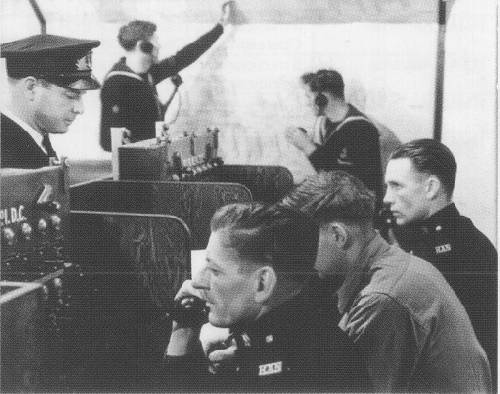- Author
- Periodical, Semaphore
- Subjects
- History - general
- Tags
-
- RAN Ships
- HMAS Cerberus (Shore Establishment), HMAS Kuttabul, HMAS Australia I, HMAS Sydney II
- Publication
- March 2008 edition of the Naval Historical Review (all rights reserved)
This article was first published in Semaphore, published by the Seapower Centre in 2007, and appears here with their kind permission.
The Royal Australian Navy (RAN) Band is a ceremonial unit of the Australian Defence Force (ADF) tasked with the mission of `promoting the RAN’, and in fulfilling this mission, it continues a proud tradition of providing ceremonial, musical and public relations support in Australia and overseas. Its musicians promote awareness in the wider community of Navy’s critical contribution to the nation and maintain one of the RAN’s most consistent and significant public engagement profiles.
Music has had a long and distinguished association with the military, the band of the British Grenadier Guards having been formed over 300 years ago, and the Royal Marine bands 239 years ago. Although not sharing the same historical background as these British counterparts, the origins of the RAN Band can be traced back to the various bands of the colonial naval forces prior to Federation. The band of the Victorian Naval Brigade was a well known musical unit in the Melbourne area during the late 19th century. Indeed, this band journeyed to China in 1900 on the eve of Federation as part of the naval contingent that assisted in quelling the Boxer Uprising, and was officially farewelled by the bluejacket New South Wales Naval Brigade Band. Later, the band of the Victorian Naval Brigade was also present as part of the Commonwealth Naval Force Band when the United States Navy’s Great White Fleet sailed into Port Phillip Bay in 1908.
Some months prior to the commissioning of HMAS Australia (I) at Portsmouth on 21 June 1913, six musicians from Melbourne were sent to England to join up with a number of ex-Royal Marine and British Army bandsmen. These musicians, who formed the first band of the infant Royal Australian Navy, arrived back in Sydney aboard Australia (I) on 4 October 1913. From the outset, the Band was dressed in a uniform very similar to that of the uniform of the Royal Marines of the period, and their appearance at ceremonial parades greatly enhanced the spectacle!
A second band was formed in 1927 for Flinders Naval Depot, now HMAS Cerberus. This band consisted of permanent musicians assisted by volunteers from all branches within the depot. In the late 1930s, there was a rapid expansion in musician recruitment with a total of five bands at sea, serving in the cruisers HMA Ships Australia (II), Canberra (I), Hobart (I), Perth (I) and Sydney (II), in addition to bands in shore establishments.

During World War II, musicians served in all theatres of war and, naturally, their operational responsibilities including complementing guns crews, handling shells in magazines, working in transmitting stations, assisting first aid parties and acting as lookouts through day and night watches, became the focus of their shipboard routine. They took the same risks as their shipmates and were among those who lost their lives in the sinking of Sydney (II). After World War II, all musicians were posted to Cerberus, where in 1951 the RAN School of Music was formed. At the same time, a boy/junior musician scheme was inaugurated for the recruitment of boys over the age of fifteen and a half years.
Bands were again posted to sea in the early 1950s and musicians saw action aboard the aircraft carrier HMAS Sydney (III) in Korean waters in 1953, patrolled Malayan waters during the Malayan Emergency, and performed two concert tours of Vietnam during the early 1970s. By 1973, the only band remaining afloat was serving aboard HMAS Melbourne (II), and this band transferred to HMAS Stalwart (II) on the decommissioning of Melbourne in mid-1982. In October 1984, the Defence Force School of Music opened in Simpson Barracks, Victoria and took over the training of all Navy and Army musicians. As a consequence, the RAN School of Music ceased operating in 1985 and the junior musicians’ scheme was also abolished. Shortly afterwards women were recruited into the Band for the first time.
Today the RAN Band consists of two major detachments of full-time musicians stationed in Sydney at HMAS Kuttabul and in Melbourne at HMAS Cerberus, while a third detachment consists of reserve members stationed in Sydney, Brisbane, Adelaide, Hobart and Perth. All Band members are required to perform in the main ceremonial ensemble of their individual detachments. However, to ensure versatility, other specialty capabilities are also maintained including a wind orchestra in Sydney, a concert band in Melbourne, as well as wind chamber ensembles, a show band and small jazz combinations in each detachment.




